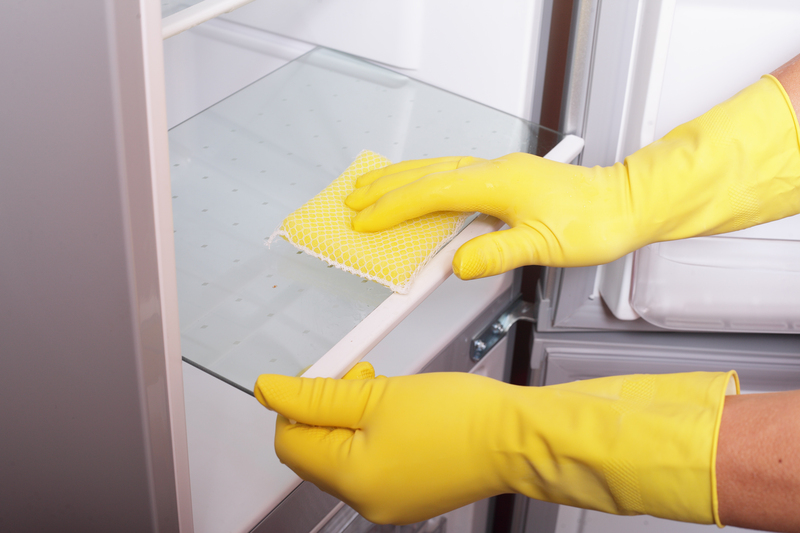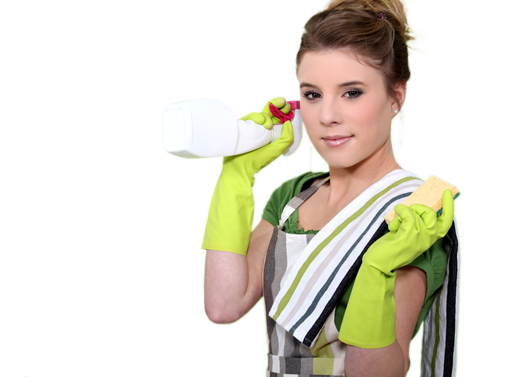Restore Your Jewelry's Beauty with Expert Cleaning
Posted on 05/10/2025
Restore Your Jewelry's Beauty with Expert Cleaning
Jewelry is more than an accessory--it's a precious treasure that holds memories, family traditions, and unique expressions of style. Over time, however, even your most cherished pieces can lose their original luster due to everyday exposure to dust, oils, and environmental pollutants. The good news? Expert jewelry cleaning can bring your favorite pieces back to life, ensuring they shine both inside and out. In this comprehensive guide, discover everything you need to know about restoring your jewelry's beauty through professional cleaning services.

Why Is Proper Jewelry Cleaning So Important?
Whether it's a sparkling diamond ring, a strand of cultured pearls, or a treasured gold bracelet, all jewelry can lose its brilliance over time. Proper jewelry maintenance and cleaning is essential for several reasons:
- Preserves Appearance: Remove built-up dirt and grime for like-new brilliance.
- Prevents Damage: Regular cleaning helps you spot loose stones or weak prongs before they cause bigger issues.
- Maintains Value: Well-cared-for jewelry retains its financial and sentimental value.
- Enhances Longevity: Keeping your jewelry clean reduces wear and tear on delicate components.
Neglecting proper cleaning can lead to irreparable damage, tarnish, and even loss of gemstones over time.
Understanding the Different Types of Jewelry Cleaning
Not all pieces are cleaned the same way. In fact, different materials and gemstones require distinct jewelry cleaning techniques. Here are some common cleaning methods used by professionals and at home:
1. Ultrasonic Cleaning
Ultrasonic cleaners use high-frequency sound waves and cleaning solutions to dislodge dirt and particles. They're highly effective for hard stones and metals like diamonds, gold, and platinum. However, not all gemstones and materials are safe for this method. It's best left to professionals to determine if this method is suitable for your jewelry.
2. Steam Cleaning
Steam cleaning blasts jewelry with high-pressure steam to remove oils and debris, leaving pieces gleaming. This method is commonly used for diamond jewelry and precious metals. However, certain delicate stones and vintage pieces may not be suitable for steam cleaning.
3. Gentle Hand Cleaning
For delicate or antique pieces, expert jewelers often opt for careful hand cleaning with specialized brushes, cloths, and non-abrasive solutions. This method is ideal for pearls, opals, emeralds, and other sensitive materials.
4. Chemical Dips and Solutions
Professional jewelers occasionally use specific cleaning solutions or chemical dips to remove tarnish from gold, silver, and platinum. It's important to use the correct solution for each material as improper use could lead to tarnish or damage.
5. Polishing and Buffing
To restore metal shine, jewelers often use a polishing wheel or cloth, buffing away minute scratches and tarnish. This process is particularly effective for gold, silver, and platinum jewelry.
When to Seek Expert Jewelry Cleaning
While it's possible to clean certain pieces at home, professional jewelry cleaning is highly recommended for the following situations:
- Heirlooms and antique jewelry with unique or fragile settings.
- Pieces featuring soft, porous, or frequently oiled gemstones such as opals, pearls, turquoise, and emeralds.
- Jewelry with intricate designs or hard-to-reach crevices where dirt accumulates.
- When you notice signs of wear, discoloration, or loose settings.
If you're ever in doubt about how to care for a piece, it's best to err on the side of caution and consult an expert.
The Step-by-Step Process of Professional Jewelry Cleaning
Wondering what happens when you trust your treasures to the care of a pro? Here's what to expect during a typical expert jewelry restoration session:
1. Inspection and Assessment
Jewelry professionals begin by examining each piece under magnification. They identify any damage, loose prongs, missing stones, or issues with delicate settings.
2. Pre-Cleaning Preparation
Before cleaning, stones are checked for stability. Any fragile or loose stones are secured or removed as necessary to prevent damage during the cleaning process.
3. Specialized Cleaning
Depending on the material combination, a tailored cleaning method is selected (ultrasonic, steam, hand cleaning, or chemical soak). The jeweler pays meticulous attention to ensure all grime is gently removed.
4. Polishing and Buffing
The jewelry is polished to restore its shine. Tiny scratches are buffed out, and metals are treated to bring back their original brilliance.
5. Final Inspection and Finishing Touches
A second inspection ensures all stones are secure, settings are intact, and the piece looks flawless. The piece is then finished with a high-quality polishing cloth and sometimes protected with an anti-tarnish coating.
Benefits of Choosing Professional Jewelry Cleaning Services
- Expertise: Jewelers are trained to handle each piece correctly and select the best cleaning method.
- Safety: Professional-grade equipment and solutions minimize the risk of damage.
- Restoration: Dull or tarnished pieces are revived to look their best.
- Preventative Care: Early identification of issues such as loose stones or worn prongs can prevent future losses or damage.
- Convenience: Letting a professional handle the work saves time and ensures optimal results.
Restoring your jewelry with specialist cleaning guarantees you enjoy its beauty for years to come.
How Often Should You Have Your Jewelry Cleaned?
While frequency depends on your lifestyle and the type of jewelry, consider these general guidelines:
- Every 6-12 months: Schedule a professional deep clean for frequently worn pieces, like engagement rings and wedding bands.
- Annually: Heirlooms and specialty items should be assessed yearly for cleaning and maintenance.
- As needed: Clean jewelry at home in between professional treatments, especially after exposure to lotions, perfumes, or dirt.
Safe At-Home Cleaning Tips for Jewelry Maintenance
In between visits to your jeweler, at-home jewelry cleaning can help maintain everyday beauty. Here are some safe methods:
Easy DIY Cleaning Method for Gold, Diamonds, and Platinum
- Mix a Solution: Combine lukewarm water with a few drops of mild dish soap.
- Soak: Place jewelry in the solution for 10-20 minutes.
- Brush Gently: Use a soft-bristled toothbrush to clean crevices. (Avoid abrasive brushes!)
- Rinse and Dry: Rinse under warm water and dry with a lint-free cloth.
Pearl and Gemstone Care
Pearls, opals, and some colored gemstones require special attention. Wipe gently with a soft, damp cloth, and avoid soaking or exposure to harsh chemicals. Never use ultrasonic or steam cleaners on these delicate materials.
Storage Tips to Prevent Tarnish and Damage
- Store each piece in a soft pouch or individual compartment to prevent scratches.
- Keep jewelry away from direct sunlight and humidity.
- Use anti-tarnish strips with silver jewelry.
- Avoid contact with perfumes, hairsprays, and household cleaners.
Remember, always check with your jeweler before attempting significant cleaning or repair work at home.
Signs It's Time for Professional Jewelry Restoration
Watch for these common indicators that your jewelry needs expert attention:
- Persistent dullness or visible dirt that doesn't come off with home cleaning.
- Discoloration, especially on silver or white gold jewelry.
- Loose stones, missing prongs, or bent clasps.
- Scratches, pitting, or general wear and tear.
- Difficulty opening or closing clasps or fasteners.
If any of the above describes your jewelry, schedule a professional restoration and cleaning as soon as possible!
Frequently Asked Questions about Expert Jewelry Cleaning
Is professional cleaning safe for all jewelry?
Professional jewelers are trained to assess each piece and use the correct cleaning method. Special care is taken with fragile, antique, or uniquely set stones to ensure safety.
How much does professional jewelry cleaning cost?
Prices range based on location, the type of jewelry, and the cleaning method required. Many reputable jewelers offer complimentary cleaning for regular customers or when performing other services.
Can I use toothpaste or baking soda to clean my jewelry?
No! These household abrasives can scratch metals and gemstones. Stick to professional solutions and tools designed for jewelry.
How long does expert cleaning take?
Most routine cleanings are done within an hour, though restoration or complex repairs may take longer. Your jeweler will provide an estimate based on the work required.

Find an Expert to Restore Your Jewelry's Beauty
Choosing an experienced jeweler is key to keeping your treasures looking their best. Look for a certified professional with a reputation for quality service, positive reviews, and expertise in handling fine jewelry. Your local jeweler is often an invaluable resource for both expert jewelry cleaning and repair.
Conclusion: Give Your Jewelry the Care It Deserves
Jewelry is more than a beautiful accessory--it's a personal statement and a repository of cherished memories. Regular professional cleaning not only restores the original luster and brilliance of your precious pieces, but also helps protect their value and longevity. Whether it's a family heirloom, an engagement ring, or your everyday favorite, don't hesitate to trust your valuables to skilled hands. Restore your jewelry's beauty with expert cleaning and enjoy years of radiant sparkle!
Remember: With expert care and attention, your jewelry can remain as stunning as the day you first wore it.





